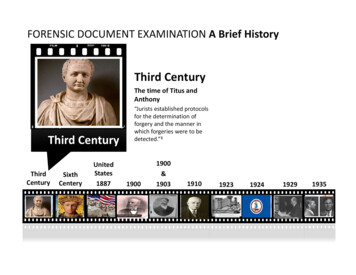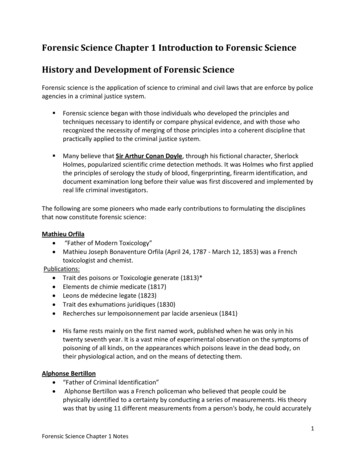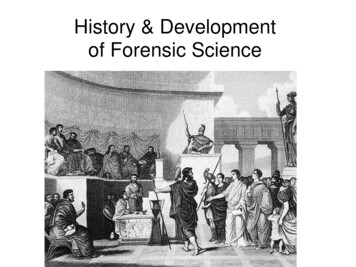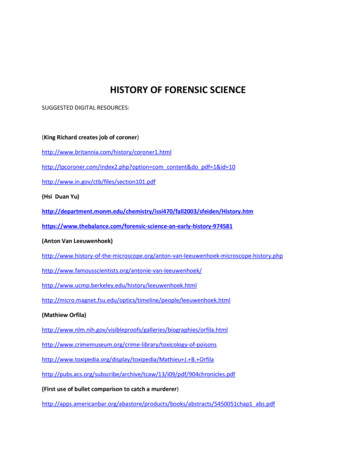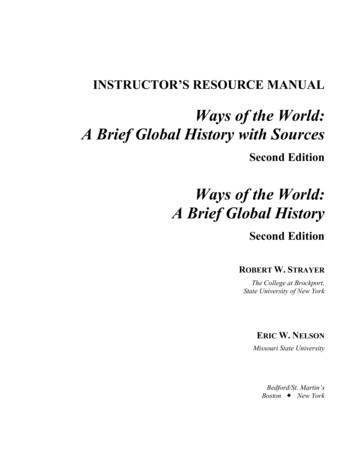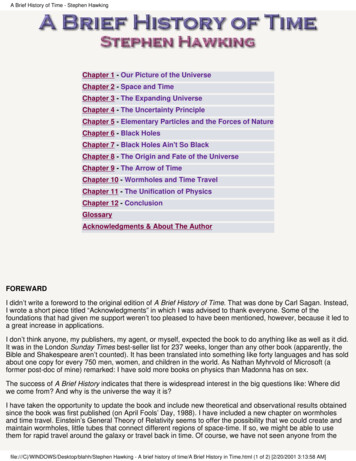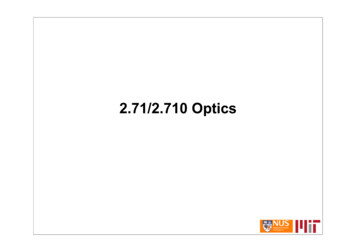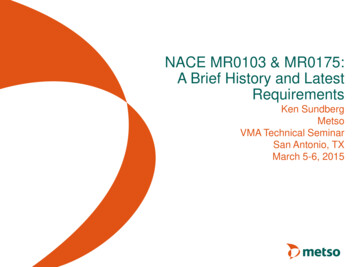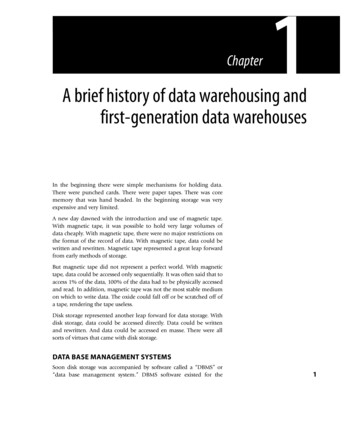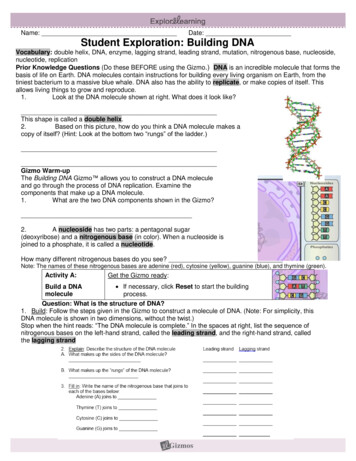
Transcription
Brief History of Forensic DNA Typing 1980 - Ray White describes first polymorphicRFLP marker 1985 - Alec Jeffreys discovers multilocusVNTR probes 1985 - first paper on PCR 1988 - FBI starts DNA casework 1991 - first STR paper 1995 - FSS starts UK DNA database 1998 - FBI launches CODIS database
DNA Use in Forensic Cases Most are rape cases ( 2 out of 3) Looking for match between evidenceand suspect Must compare victim’s DNA profileChallenges Mixtures must be resolved DNA is often degraded Inhibitors to PCR are often present
Human Identity Testing Forensic cases -- matching suspect with evidencePaternity testing -- identifying fatherHistorical investigationsMissing persons investigationsMass disasters -- putting pieces back togetherMilitary DNA “dog tag”Convicted felon DNA databases
Steps in DNA Sample ProcessingSample Obtained fromCrime Scene or tionAmplificationofMultipleof MultipleSTRSTRmarkersmarkersTechnologySeparation and Detection ofPCR Products(STR Alleles)Comparison of SampleGenotype to OtherSample ResultsSample GenotypeDeterminationGeneticsIf match occurs, comparisonof DNA profile to populationdatabasesGeneration of CaseReport with Probabilityof Random Match
Sources of Biological Evidence BloodSemenSalivaUrineHairTeethBoneTissue
DNA in the Cellchromosomecell nucleusDouble strandedDNA moleculeTarget Region for PCRIndividualnucleotides
DNA Amplification with thePolymerase Chain Reaction (PCR)5’3’5’3’Starting e)Forward primer5’3’5’3’Make �5’Reverse primer
PCR Copies DNA Exponentiallythrough Multiple Thermal CyclesOriginal DNA target regionThermal d
Short Tandem Repeats (STRs)AATG7 repeats8 repeatsthe repeat region is variable between samples while theflanking regions where PCR primers bind are constantHomozygote both alleles are the same lengthHeterozygote alleles differ and can be resolved from one another
fferent primer sets produce different PCR product sizes for thesame STR allele
Multiplex PCR Over 10 Markers Can BeCopied at Once Sensitivities to levels less than1 ng of DNA Ability to Handle Mixturesand Degraded Samples Different Fluorescent DyesUsed to Distinguish STRAlleles with Overlapping SizeRanges
An Example Forensic STR Multiplex KitAmpFlSTR Profiler Plus Kit available from PE Biosystems (Foster City, CA)200 bpColor Separation100 bpSize SeparationD3AvWAD8D5FGA300 bp400 bp5-FAM (blue)D21D18JOE (green)D13D7NED (yellow)ROX (red)GS500-internal lane standard9 STRs amplified along with sex-typing marker amelogenin in a single PCR reaction
Available Kits for STR Analysis Kits make it easy for labs to just add DNAsamples to a pre-made mix 13 CODIS core loci– Profiler Plus and COfiler (PE Applied Biosystems)– PowerPlex 1.1 and 2.1 (Promega Corporation) Increased power of discrimination– CTT (1994): 1 in 410– SGM Plus (1999): 1 in 3 trillion– PowerPlex 16 (2000): 1 in 2 x 1017
ABI Prism 310 Genetic AnalyzercapillarySyringe withpolymer rayInletbuffer
Close-up of ABI Prism 310 Sample Loading AreaElectrodeCapillarySample VialsAutosampler TraySee Technology section for more information on CE
Human Identity Testing with Multiplex STRsAmpFlSTR SGM Plus kitTwo different individualsDNA Size (base pairs)amelogeninD19D3D8 TH01VWA D21D16D18D2FGAprobability of a randommatch: 1 in 3 trillionamelogenin D3D19D8VWATH01Results obtained in less than 5hours with a spot of blood thesize of a pinheadD16D21FGAD18Simultaneous Analysis of 10 STRs and Gender IDD2
STR genotyping is performed by comparisonof sample data to allelic laddersMicrovariantallele
STR Allele Frequencies4540TH01 MarkerFrequency3530Caucasians (N 427)Blacks (N 414)Hispanics (N 414)25201510*Proc. Int. Sym. Hum. ID5(Promega) 1997, p. 34067899.3Number of repeats10
FBI’s CODIS DNA DatabaseCombined DNA Index System Used for linking serial crimes and unsolvedcases with repeat offenders Launched October 1998 Links all 50 states Requires 4 RFLP markersand/or 13 core STR markers Current backlog of 600,000 samples
13 CODIS Core STR Lociwith Chromosomal 7S820AMELD13S317D16S539D18S51D21S11AMEL
Brief History of Forensic DNA Typing 1980 - Ray White describes first polymorphic RFLP marker 1985 - Alec Jeffreys discovers multilocus VNTR probes 1985 - first paper on PCR 1988 - FBI starts DNA casework 1991 - first STR paper 1995 - FSS starts UK DNA database 1998 - File Size: 313KB
